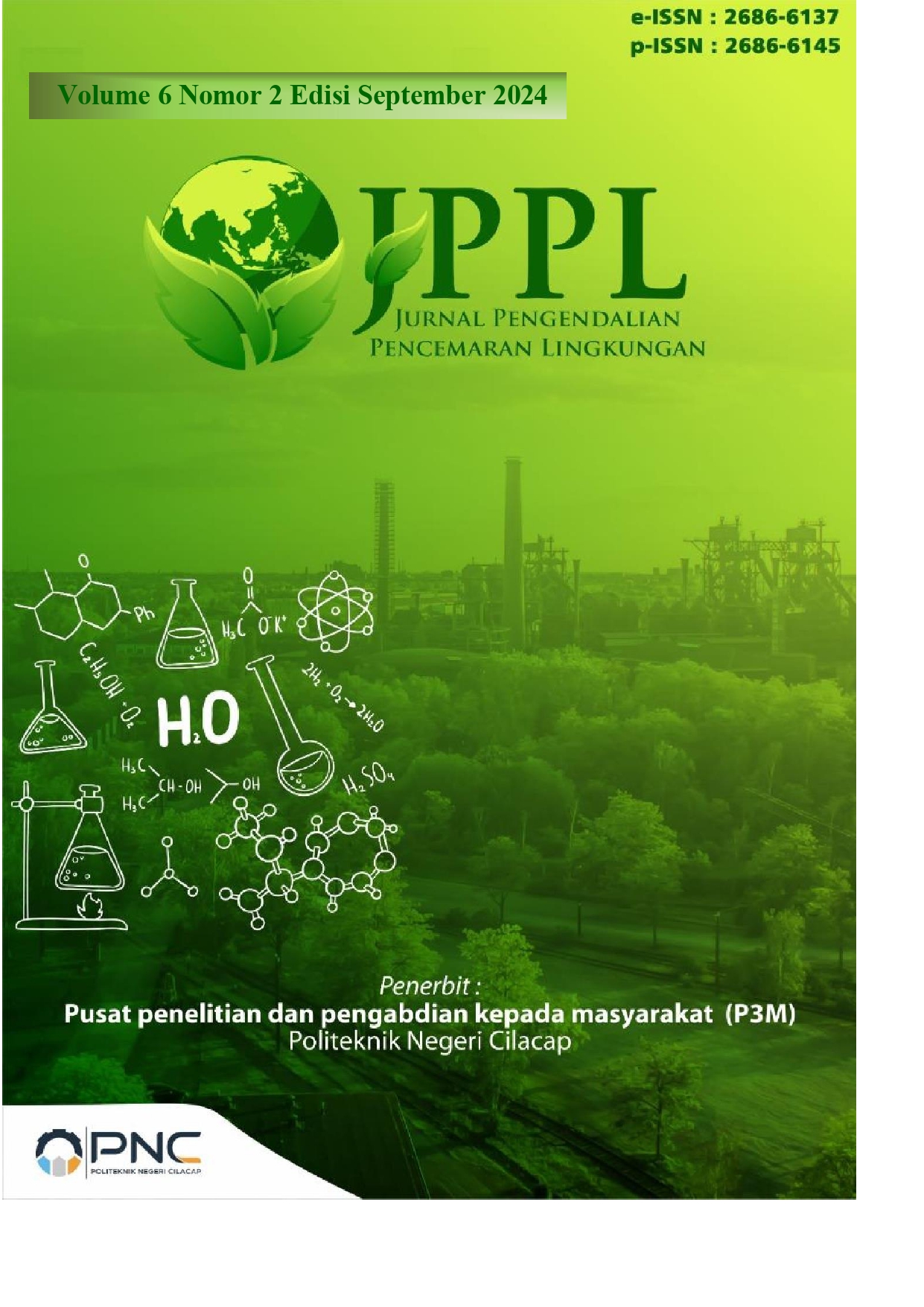Preparation of a Carboxymethyl Cellulose (CMC) and Pektin-Based Hydrogel As an Adsorbent of Cu (II) Using the Freeze-Thaw Method
 Abstract views: 167
,
Abstract views: 167
,
 PDF downloads: 260
PDF downloads: 260
Abstract
Water pollution is a serious global problem caused by increasing industrialization and urbanization. The heavy metal Cu is one of the dangerous compounds that causes water pollution because it has a toxic effect on humans and can cause mental retardation, anemia, hypertension, etc. Removal of Cu metal in water can be done using CMC and Pectin-based hydrogel adsorbents. Hydrogels are hydrophilic polymer composites with a physically well-defined three-dimensional (3D) network and chemically responsive functional groups, which enable the hydrogel to easily capture metal ions without dissolving. The hydrogel synthesized via the Freeze-Thaw method has greater elastic characteristics. The adsorption properties were investigated by two isotherm models and five kinetic models. FTIR analysis proved that the –OH group was detected freely due to the interaction between CMC and pectin, the COOH group with the highest ability to bind metals, and other groups, namely C=O, C-O, and C-O-C. BET analysis shows that the hydrogel has a surface area of 1.685 m²/g and is classified as type 1 on the isotherm chart, referring to the dominance of micropores in a material or materials with mesopore content close to micropores. The optimum conditions in the adsorption process are at a concentration of 223 ppm, using the Langmuir isotherm model with an adsorption efficiency of 20,84%. The highest adsorption capacity was at a concentration of 74 ppm which occurred at 120 minutes, using a Pseudo 2nd Order kinetic model with an adsorption efficiency of 85,07%.
Copyright (c) 2024 Nurazizah Melani Dewi, Nabilla Maharani Maelan, Sri Andini, Meka Saima Perdani, Aulia Wahyuningtyas

This work is licensed under a Creative Commons Attribution 4.0 International License.

















